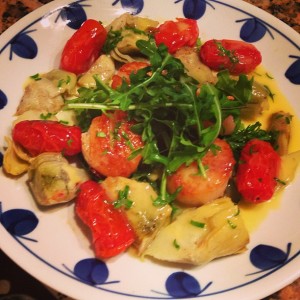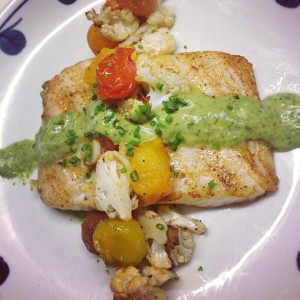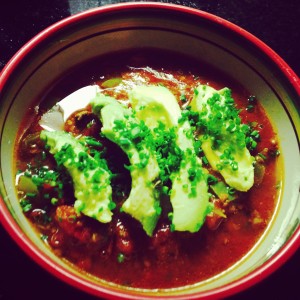Last week on the blog, we went over same basic nutrition guidelines to help you with your New Years resolutions. This week, it’s time to put those guidelines into practice with some healthy delicious recipes. All of these dishes are low in fat, high in protein, contain to added sugar, and are filled with nutrient packed veggies. But they’re so tasty and rich, you won’t even realize how good they are for you!
London Broil with Butternut Squash Mash, Arugula, and Balsamic Vinaigrette
1 lb of London Broil
3 tablespoons and ¼ cup balsamic vinegar, divided
2 tablespoons Dijon mustard, divided
½ large red onion, minced with a grater
2 garlic cloves, grated or finely chopped
1 garlic clove, smashed
½ cup olive oil, divided, plus 1 tablespoon,
1/3 cup of unsweetened almond milk
½ cup arugula
1 butternut squash, peeled and cut into small chunks
Salt and pepper, to taste.
Place the ¼ cup of balsamic vinegar in a gallon sized zip top bag with 1 tablespoon of mustard, half of the minced onion, the grated garlic, ¼ cup olive oil, and some black pepper, and mix together a bit in the bag. Add the steak. Allow the steak to marinate for 24 hours in the refrigerator.
When you are ready to cook, preheat the oven to 375. Toss the butternut squash with 1 tablespoon of olive oil, salt, and pepper.
While the oven is preheating, make the vinaigrette. Combine the last ¼ cup of balsamic vinegar, the last of the minced onion, the last tablespoon of Dijon, in a bowl and whisk to mix together. Then slowly add the last ¼ cup of olive oil, whisking to fully incorporate the vinegar into the oil. Season with salt and pepper.
When the oven is at 350, place the squash on a baking sheet in the oven until browned and cooked through, 8-10 minutes.
Meanwhile, heat up a grill or a cast iron skillet, then add a tablespoon of olive oil and allow the oil to heat up. Cook the steak 5 minutes, then flip and cook an additional 5 on the other side. Set the steak aside to rest for a few minutes.
While the steak is resting, dress the arugula with a small amount of the balsamic dressing and season with salt and pepper.
Place the butternut squash in a bowl and add the almond milk. Mash together with a potato masher until it’s a thick, chunky mash.
After the steak has rested for a few minutes, slice on the grain. Serve with the arugula salad on top, drizzled with the vinaigrette, and with the mash on the side.
Portuguese Style Chicken and Kale Stew
4 boneless skinless chicken breasts, cut into bite size pieces
3 large sweet potatoes, cut into small pieces
½ lb chorizo, sliced thin
½ lb Cremini mushrooms, halved
1 large onion, diced
4 cloves of garlic, chopped
1 bunch of kale, stemmed and roughly chopped
1 cup chicken stock
1 tablespoon of smoked sweet paprika
1 bay leaf
1 15 ounce can of fire roasted tomatoes
½ cup of dry sherry
1 tablespoon chopped parsley
1 tablespoon olive oil
Salt and pepper, to taste
Use a flame or the broiler to char the peppers. Put in a bowl and cover with plastic wrap. Once they cool, remove the peel and seeds and dice.
Heat a large pot or Dutch oven over medium heat. Add olive oil. Season the chicken pieces with salt and pepper, and a bit of the paprika. Add to the pot and brown the chicken for a few minutes, then remove from the pan. Put the chorizo in the pot and let it render and get crispy for 2 minutes, then add the mushrooms and potatoes and brown for 5 minutes. Add the bay leave, then the onion and garlic and allow them to soften for 5 minutes. Slowly wilt in the kale. Deglaze with the sherry, and give it 2-3 minutes for the alcohol to boil out. Then add the peppers, and tomatoes, along with the chicken. Pour in the chicken stock and cover. Cook for 20 minutes, until the chicken is thoroughly cooked and the soup has combined and thickened. Serve with grilled whole grain or Paleo bread and garnish with the chopped parsley.














